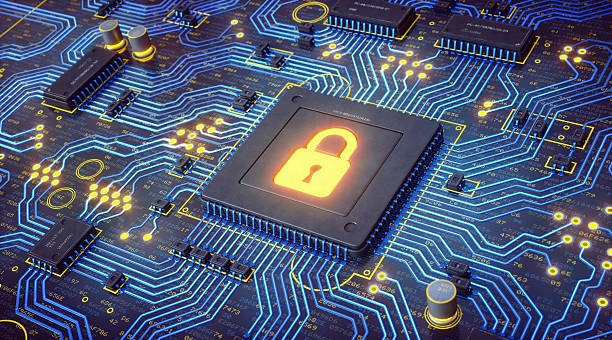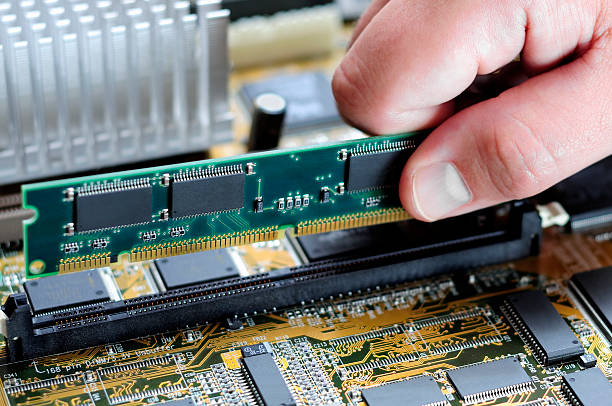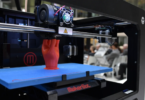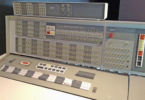What is the Role of CPU in the Computer System?
Experts often refer to a CPU as the central nervous system of any computer system. This description is accurate as its role involves processing instructions when running software programs and interpreting calculations generated from those programs.
A CPU (Central Processing Unit) is a microprocessor composed of billions of microscopic transistors on one computer chip that operates as binary ones and zeros to deliver instructions for running stored programs.
What is CPU?
A central processing unit (CPU) of a computer serves as the centrepiece for processing and interpreting most commands and instructions from other components such as software, hard drives, and input/output devices. Also referred to as simply “a chip with millions of transistors,” its sole job is performing all operations and communicating with other parts through the system bus.
The CPU consists of thousands of tiny rod-shaped transistors. Each transistor can either be set to on (yes) or off (no), creating the basic binary code used by computers. By asking yes or no queries and interpreting their responses, a CPU can process data and carry out instructions efficiently.

What is the Role of CPU in the Computer System?
CPUs can often be likened to human brains in that they receive signals from different parts of the body and process them before creating output. Like the human brain, CPUs take instructions from memory and interpret them accordingly for tasks like mathematical calculations. They can perform multiple tasks at the same time but must adhere to an instruction sequence set by a clock signal to remain synchronized with other parts of their computer system.
A CPU typically consists of three major parts. Its control unit (CU) contains electrical signals that direct an arithmetic logic unit and memory to carry out stored program instructions; its primary job involves performing mathematical and logical operations for decision-making. Registers are then used to store both instructions and data needed by this component of the CPU in preparation for its next instruction cycle step.
CPUs can be found not only in desktop and laptop computers but also tablets, smartphones, smart TVs, DVD players and some smart washing machines! In these types of devices, their CPU completes calculations that enable software programs that enable users to call friends, browse the web or send emails.
What is RAM?
RAM (Random Access Memory) is one of the core components of your computer that stores information needed by its CPU and other components for proper application functioning. Without RAM, no computer would ever be able to perform its various functions – acting as a short-term storage bank so data can be quickly retrieved by CPU rather than having to access long-term storage such as hard disk drives and flash memory.
The CPU serves a crucial purpose: taking in data from devices like a mouse and keyboard, processing it, and then creating output. This works similarly to how humans process information; for example, taking input of button presses from mice or keyboards and then searching its instructions database before acting accordingly – similar to how our brain processes information! To do all this efficiently and effectively requires billions or even trillions of yes/no questions asked by tiny transistors called microprocessors in chips called CPUs.

Modern CPUs feature multiple cores to enable multitasking capabilities. Each core consists of a small processor capable of handling an instruction set; all cores are assembled onto an integrated circuit chip, which contains other hardware such as input/output ports and memory interfaces. This soC is more commonly known by its nickname SoC.
A CPU comprises three major sections: the control unit, the arithmetic logic unit (ALU), and the registers. The control unit directs instruction flow from input/output devices as well as moving data across external interfaces (system bus). ALU processes calculations using mathematical and logical operations while registers act as high-speed memory storage units that hold bits of information – some visible to users while others reserved exclusively for CPU use.
A CPU’s fundamental operation is known as the Fetch-Decode-Execute cycle. A clock pulse synchronizes all parts of its processor, and an instruction from memory is read upon receiving a read pulse from memory. Binary decoder circuitry then decodes this instruction into control signals for other parts to execute the instruction.
What is ROM?
IT and related fields often need to understand read-only memory (ROM). This permanent form of storage memory is used in most electronic devices like computers and mobile phones for storage purposes. ROM differs from random access memory (RAM), another essential component in many electronic devices; its primary role is often booting up properly while keeping information consistent after being unplugged from its host device.
ROM memory can provide the foundation of system software on devices, including operating systems and basic utility programs since its non-volatile nature means its contents do not need to be erased and written over as frequently. Furthermore, its versatility also allows it to store lookup tables that come in handy when performing mathematical operations or comparing data.
The CPU works according to a fetch-decode-execute pattern in which it takes instructions from memory and executes them, performing various calculations such as arithmetic operations, number comparison, moving numbers around in memory and so forth. Once finished, these results are then passed along to other components such as graphics cards, which process images and video.
One reason a CPU is called the “brain” is because it controls how information moves throughout a hardware system and executes instructions based on those decisions, much like how our bodies organs and cells operate within our bodies, with individual organs being controlled via hormones and their equivalent code.
Another key distinction between ROM and RAM is its inability to be written to. Typically made up of masks that cannot be modified, some forms of flash ROM can be upgraded with additional functionality through firmware updates; this type of flash ROM is often seen in embedded systems such as MP3 players and consumer electronics designed for specific uses without regular firmware updates like traditional PCs would need.
What is I/O?
I/O (input/output) unit serves to link together other hardware and software tools used to run computers, like graphics cards and SSD drives, with your CPU. Like an orchestra conductor feeding data directly into specific pieces of specialized hardware when necessary – for instance, instructing graphics card to display fuel drum explosion in video game; or sending instructions directly to SSD for faster access of Office document from CPU cache into system RAM cache.
The CPU performs all types of data processing operations. It stores data, intermediate results, and instructions (program). Furthermore, the CPU directs all other computer components on how to respond when receiving instructions from the main memory.
Modern CPUs are complex integrated circuit chips containing millions of transistors. Their main parts include a control unit, an arithmetic logic unit, and memory management units.
The control unit performs basic arithmetic and logic operations on input from main memory and output devices before forwarding data to an arithmetic logic unit for further processing before ultimately sending to the input/output device or other CPU components as per instruction.
The Arithmetic Logic Unit (ALU) of a CPU is a digital circuit that performs integer arithmetic and bitwise logic operations on input data words from previous operations, status information from these operations, as well as code from its control unit that specifies which operation to execute. Once complete, these results are stored either in processor registers or main memory for further use.
Memory management units (MMUs) are integral to CPUs, managing the allocation and storage of data structures and instructions in main memory. MMUs ensure that CPUs can access all available main memory capacity at any given time.
The Arithmetic and Logic Units (ALUs) of a CPU are digital circuits that perform all necessary mathematical and logical operations required for processing input data. ALUs receive operand data words (called operands), status information from previous operations, as well as instructions from their control unit indicating which operation needs to be executed.





